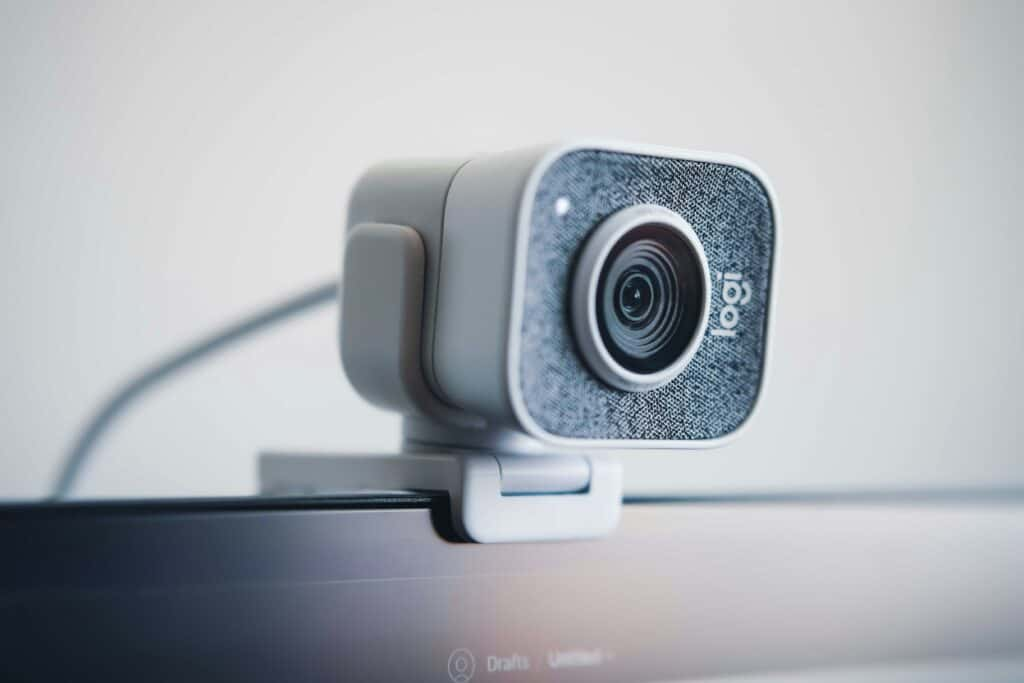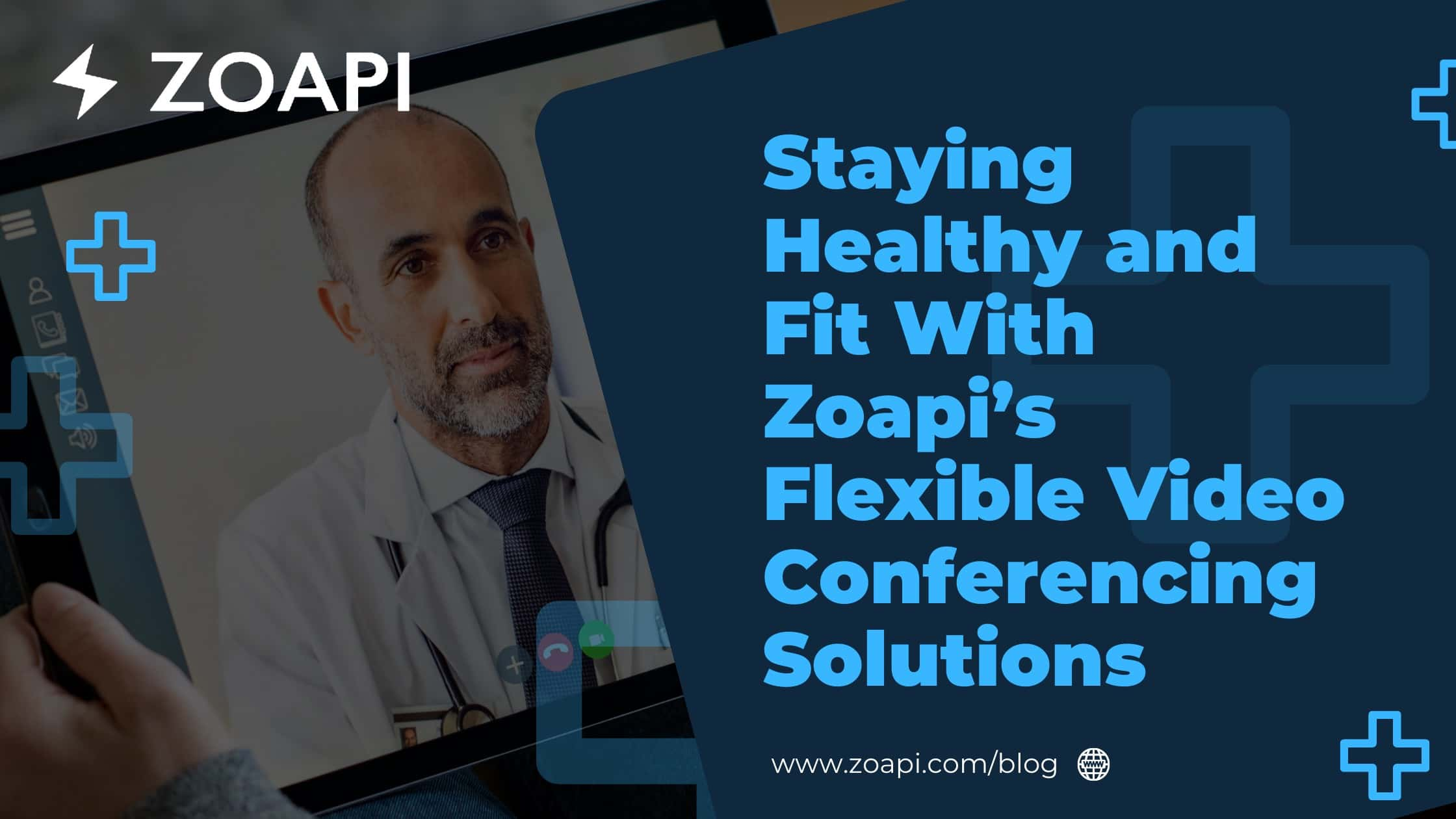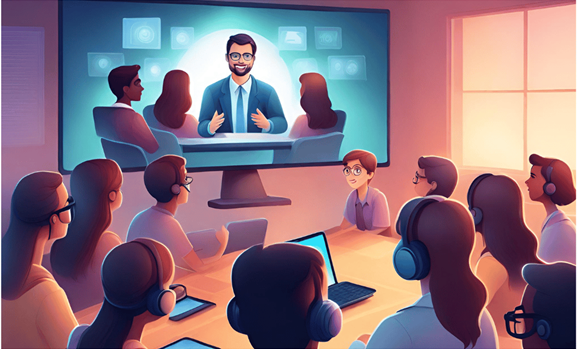
What are the Types of Video Conferencing?
Video conferencing has become a part of our daily routine, especially for companies that handle remote teams worldwide. It allows us to connect easily and offers diverse video conferencing options tailored to specific communication needs.
This article will explore the types of video conferencing and their respective uses. You will also learn how Zoapi provides a seamless video conferencing experience worldwide.
What is Video Conferencing?
Video conferencing is a way to hold a live meeting between individuals in different locations. Video conferencing enables people to hold live meetings between individuals in different locations. It enables people to meet and collaborate face-to-face despite being at long distances from each other by transmitting audio, video, text, and real-time presentations over the Internet.
Video conferencing is used for various purposes, including team meetings, webinars, product demonstrations, job interviews, and more. It is important because it allows people who would not usually be able to meet in person to form a face-to-face connection. Video conferencing, or VC, requires special equipment such as webcams, high-speed internet connectivity, and personal computers.
What Are Equipment Needed for Video Conferencing?
Video conferencing has become convenient for many organizations, especially after COVID-19. But it also needs some essential equipment for video conferencing.
1. Camera/Webcam.
The eye captures and transmits your video signal to other participants. While most laptops and desktops have built-in cameras, investing in a high-resolution webcam with at least 1280×720 resolution is recommended for clearer visuals.
2. Microphone.
While built-in microphones can suffice, opting for a plug-and-play external microphone enhances audio quality, ensuring everyone can hear you without disruptions.
3. Internet Connection.
This is obvious: A reliable and high-speed internet connection is the backbone of successful video conferencing. It guarantees smooth transmission of both video and audio signals, preventing lags or disruptions during your meetings.
4. Video Conferencing Software.
The choice of video conferencing platform matters. Opt for reputable software such as Zoom, Microsoft Teams, or others to ensure a user-friendly and feature-rich environment for your virtual meetings.
5. Headset.
Headphones or headphones are recommended to enhance your listening and speaking experiences. This improves audio clarity and prevents your microphone from picking up your guest’s voice from your computer.
6. Speakers.
Quality speakers are essential components for effective video conferencing. They can be on-table, sound-bar mounted, or in-ceiling, contributing to a more immersive and clear audio experience.

What Are The Types of Video Conferencing?
There are two main types of video conferencing, point-to-point and multi-point, which serve different purposes in communication. Multipoint conferencing systems can be used for communication and collaboration for three or more persons in separate areas. In contrast, point-to-point conferencing systems allow two people placed in different locations to cooperate and interact.
1. Point-to-Point Video Conferencing:
Technical Details:
● Direct link: It allows one-on-one communication by establishing a direct link between two destinations.
● Bandwidth Utilisation: It only requires less bandwidth, which is often needed since only two parties interact.
● Low Latency: Because of the direct communication channel, it provides low latency.
Key Features:
● Emphasis on Privacy: Because point-to-point video conferencing is so direct and private, it’s frequently used for private conversations.
● Resource Efficiency: Fits for smaller-scale interactions since it uses less bandwidth and resources.
● Ease of Setup: A point-to-point connection is simple, making meetings go more quickly and smoothly.
2. Multi-point Video Conferencing:
Technical Details:
● Shared Communication Channel: This video conferencing connection involves several people getting in touch over the same channel.
● Greater Bandwidth Requirement: Requires more bandwidth to support several audio and video streams simultaneously.
● Increased delay: As data is dispersed across several connections, there may be a small increase in delay with more participants.
Key Features:
● Collaborative Environment: Encourages group discussions amongst participants; perfect for meetings with the team and other collaborative efforts.
● Versatility: It can accommodate more attendees, which makes it appropriate for virtual events, webinars, and sizable conferences.
● Cost-Effective Communication: Allows cost savings by allowing participants to connect without traveling long distances.
Additionally, there are different types of video conferencing depending on the usage. For example,
3. Desktop video conferencing
Using software like Zoom or Microsoft Teams, this technology enables participants to attend meetings from their PCs or laptops.
4. Room-Based Visual Conferencing
Improves audio and visual quality during group meetings by using specific conference rooms equipped with specialized equipment.
5. Web Conferencing
Usually utilized for distant work and virtual events, it allows online meetings, presentations, and collaboration via a web browser.
6. Mobile Video Conferencing
Allows participants to attend meetings via smartphones or tablets, promoting flexibility and on-the-go communication.
What Are The Benefits of Video Conferencing?
1. Enhanced Communication
Video conferencing allows you to have face-to-face conversations, which helps you better understand each other and work together more effectively. It is a great way to collaborate and share ideas.
2. Cost Savings
It’s a great way to communicate with others without having to leave your office or home. By embracing this technology, you can reduce your travel costs significantly. Whether for business or personal purposes, video conferencing is a convenient option that allows you to stay connected with others without being physically present
3. Increased Productivity
Collaborating remotely speeds up decision-making, project completion, and productivity. Organizing your work logically and prioritizing the most important information first is important. Short sentences with only necessary information are best.
4. Global Reach
Video conferencing enables people worldwide to communicate and collaborate easily. This technology makes it possible to connect with others internationally, which is especially helpful for businesses and organizations.
5. Time Efficiency
Video conferences are scheduled promptly, which helps to facilitate focused discussions and timely decision-making.
Features of Zoapi Video Conferencing Software
Zoapi is a comprehensive solution with rich features to improve your virtual meeting experience.
1. Screen Sharing.
Zoapi enables seamless screen sharing in under 30 seconds, fostering interactive presentations and collaboration.
2. HD Video Conferencing.
We offer high-definition video conferencing, ensuring crystal-clear communication with remote clients through preferred applications.
3. Calendar Integration.
Zoapi streamlines meeting planning by integrating room calendars with the Zoapi Hub for seamless organization.
4. Room Scheduler.
Zoapi’s scheduler informs users about upcoming meetings on their home screen, allowing one-click join for efficient participation.
5. Dashboard.
Our user-friendly dashboard provides limited room management and a utilization summary, enabling quick, informed decisions.
6. Email Notification.
Zoapi offers email notifications for weekly and monthly reports on meeting room usage to keep users in the loop. Additionally, daily device status notifications ensure that users stay informed about the operational health of their video conferencing setup.
Conclusion
In a nutshell, Video conferencing offers adaptable options for modern communication needs. Each type has a specific function, allowing for efficient and flexible virtual interaction. Zoapi is a robust software with features to cater to diverse business needs, enhancing collaboration and productivity.
With Zoapi,
- You can start your meeting in 20 seconds
- Experience personalised support
- Get an Intuitive user interface
- Pocket-friendly solution
Read More
Role of Video Conferencing in healthcare
Etiquette- Key to a successful video conference
The Long-dated Tale of Video-Based Communications: Then to Now




